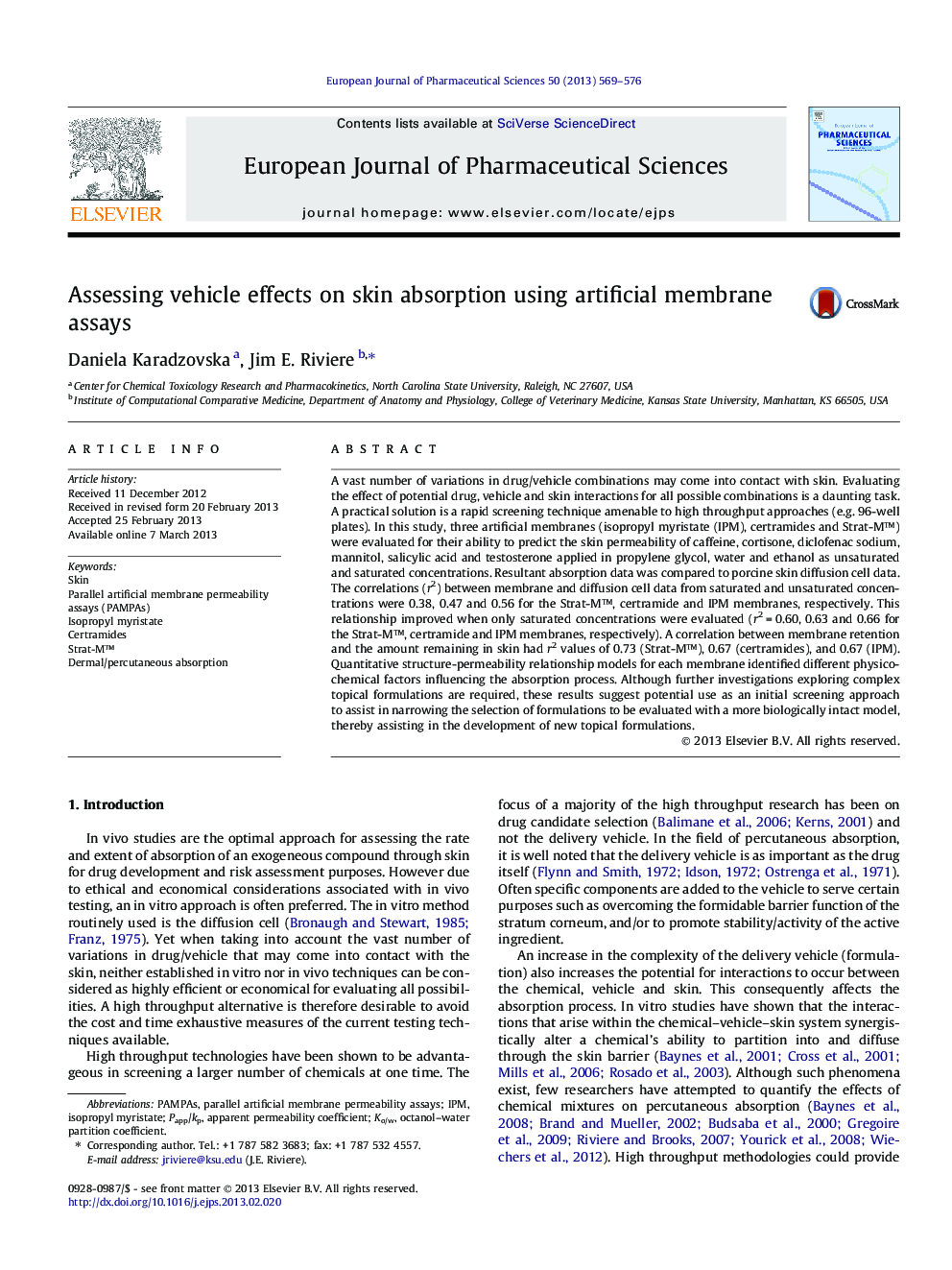| Article ID | Journal | Published Year | Pages | File Type |
|---|---|---|---|---|
| 5810038 | European Journal of Pharmaceutical Sciences | 2013 | 8 Pages |
A vast number of variations in drug/vehicle combinations may come into contact with skin. Evaluating the effect of potential drug, vehicle and skin interactions for all possible combinations is a daunting task. A practical solution is a rapid screening technique amenable to high throughput approaches (e.g. 96-well plates). In this study, three artificial membranes (isopropyl myristate (IPM), certramides and Strat-Mâ¢) were evaluated for their ability to predict the skin permeability of caffeine, cortisone, diclofenac sodium, mannitol, salicylic acid and testosterone applied in propylene glycol, water and ethanol as unsaturated and saturated concentrations. Resultant absorption data was compared to porcine skin diffusion cell data. The correlations (r2) between membrane and diffusion cell data from saturated and unsaturated concentrations were 0.38, 0.47 and 0.56 for the Strat-Mâ¢, certramide and IPM membranes, respectively. This relationship improved when only saturated concentrations were evaluated (r2 = 0.60, 0.63 and 0.66 for the Strat-Mâ¢, certramide and IPM membranes, respectively). A correlation between membrane retention and the amount remaining in skin had r2 values of 0.73 (Strat-Mâ¢), 0.67 (certramides), and 0.67 (IPM). Quantitative structure-permeability relationship models for each membrane identified different physicochemical factors influencing the absorption process. Although further investigations exploring complex topical formulations are required, these results suggest potential use as an initial screening approach to assist in narrowing the selection of formulations to be evaluated with a more biologically intact model, thereby assisting in the development of new topical formulations.
Graphical abstractDownload high-res image (70KB)Download full-size image
